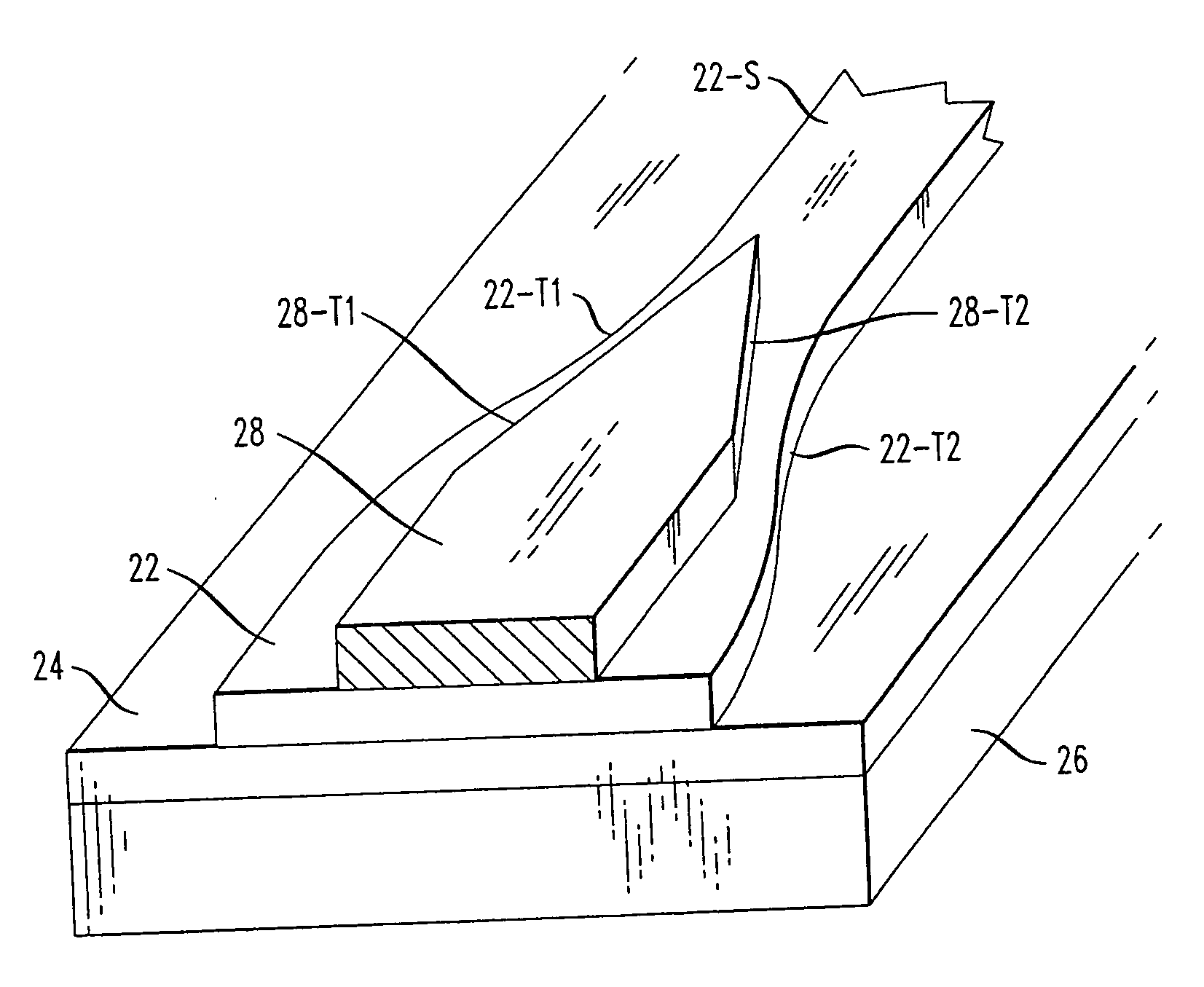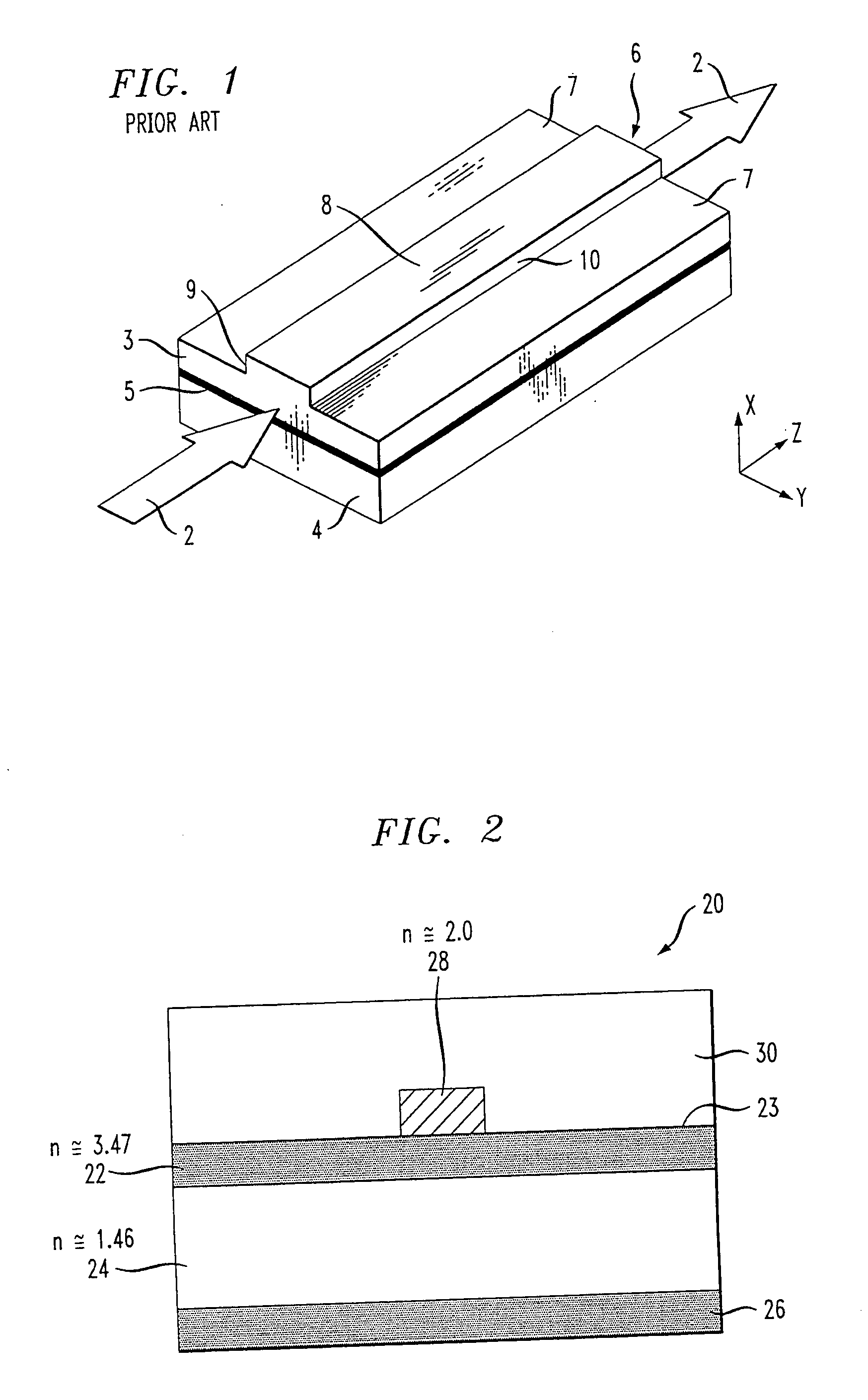Ultra low-loss CMOS compatible silicon waveguides
a technology of cmos and silicon, applied in the direction of optical waveguide light guide, instruments, electrical equipment, etc., can solve the problems of high optical loss along the rib waveguide, etchant tends to roughen the exposed sidewall surface, and strip waveguides exhibit relatively high optical loss through their (relatively rough) sidewalls, etc., to achieve low loss and lower loss
- Summary
- Abstract
- Description
- Claims
- Application Information
AI Technical Summary
Benefits of technology
Problems solved by technology
Method used
Image
Examples
Embodiment Construction
[0023]FIG. 1 illustrates an SOI-based silicon rib waveguide structure 1 as typical in the prior art. The longitudinal z-axis indicates the direction of light propagation, indicated by arrows 2, with the transverse y-direction and x-direction referred to as the “horizontal” and “vertical” directions, respectively. Silicon rib waveguide structure 1 generally consists of a relatively thin single crystal silicon surface layer 3 (generally referred to hereinafter as the “SOI layer”) bonded to a relatively thick silicon substrate 4, with an isolation layer 5 therebetween (thus forming the silicon-on-insulator (SOI) structure). Rib structure 6 is generally fabricated by reactive ion etching (RIE) a pair of parallel trenches 7 in SOI layer 3. Rib structure 6 is defined as having a top surface 8 and opposing sidewalls 9, 10. The optical mode profile O is also shown in FIG. 1. As mentioned above, the use of an etching technique to create sidewalls 9 and 10 results in allowing a significant po...
PUM
 Login to View More
Login to View More Abstract
Description
Claims
Application Information
 Login to View More
Login to View More - R&D
- Intellectual Property
- Life Sciences
- Materials
- Tech Scout
- Unparalleled Data Quality
- Higher Quality Content
- 60% Fewer Hallucinations
Browse by: Latest US Patents, China's latest patents, Technical Efficacy Thesaurus, Application Domain, Technology Topic, Popular Technical Reports.
© 2025 PatSnap. All rights reserved.Legal|Privacy policy|Modern Slavery Act Transparency Statement|Sitemap|About US| Contact US: help@patsnap.com



